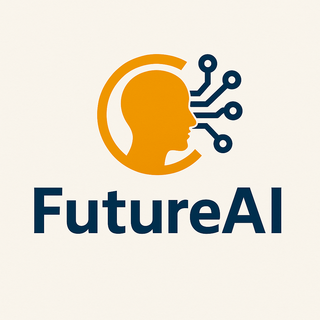🕶️ AI in Virtual Reality (VR) & Augmented Reality (AR) – The Future of Immersive Technology
AI is transforming Virtual Reality (VR) and Augmented Reality (AR) by making experiences more realistic, interactive, and intelligent. Whether in gaming, education, or healthcare, AI-driven VR and AR are changing how we interact with the digital world.
🔹 1. What is VR & AR?
✅ Virtual Reality (VR) – A completely immersive digital world using headsets like Oculus, HTC Vive, and PlayStation VR.
✅ Augmented Reality (AR) – Enhances the real world by overlaying digital elements using smartphones or AR glasses (like Google Lens).
📌 Example: Pokémon GO uses AR to bring Pokémon into the real world!
🔹 2. How AI Enhances VR & AR?
AI makes VR & AR smarter by:
✅ Realistic Interactions – AI allows NPCs (non-player characters) to react naturally in VR games.
✅ Hand & Gesture Recognition – AI tracks movements for a more immersive experience.
✅ Voice Recognition – AI enables voice-controlled VR experiences.
✅ Personalized Content – AI adapts AR/VR experiences based on user behavior.
✅ Real-time Object Detection – AI helps AR apps identify real-world objects and provide information.
📌 Example: Google Lens uses AI to recognize objects, landmarks, and text in AR.
🔹 3. Uses of AI in VR & AR
🚀 Gaming & Entertainment 🎮 – AI-driven VR games create more immersive environments.
🚀 Healthcare & Surgery Simulation 🏥 – AI-powered VR trains doctors with virtual surgeries.
🚀 Education & Training 📚 – AI-based AR apps help students visualize complex subjects.
🚀 Retail & Shopping 🛍️ – AI-powered AR lets customers try products before buying (e.g., IKEA AR).
🚀 Real Estate & Architecture 🏠 – AI-driven VR tours allow buyers to explore homes remotely.
📌 Example: Microsoft HoloLens uses AR & AI for medical training and industrial applications!
🔹 4. Benefits of AI in VR & AR
✔️ More Immersive Experiences – AI makes virtual environments feel real.
✔️ Better Personalization – AI customizes content based on user behavior.
✔️ Hands-Free Interaction – AI-powered voice and gesture recognition improve usability.
✔️ Faster Learning & Training – AI-driven VR helps students and professionals train efficiently.
✔️ Enhanced Shopping & Customer Experience – AI-powered AR improves online shopping.
📌 Example: L’Oréal’s AR app allows users to try different makeup styles virtually!
🔹 5. Challenges of AI in VR & AR
❌ High Cost – AI-powered VR/AR headsets are expensive.
❌ Technical Limitations – AI still struggles with natural movements in VR.
❌ Data Privacy Concerns – AI-driven AR collects personal user data.
❌ Health Issues – Excessive VR use can cause motion sickness.
📌 Example: Some VR headsets cause dizziness due to imperfect AI motion tracking.
🔹 6. Future of AI in VR & AR
🚀 Hyper-realistic AI-driven VR games
🚀 AI-powered holographic meetings
🚀 Smart AR glasses replacing smartphones
🚀 AI-controlled virtual humans for interaction
📌 **The future of AI in VR & AR is limitless, making digital experiences indistinguishable from reality!
🎯 Conclusion
✔️ AI enhances VR & AR by making interactions smarter and more realistic.
✔️ AI-powered gesture recognition, voice control, and object detection improve user experiences.
✔️ AI-driven VR/AR is revolutionizing gaming, healthcare, education, and shopping.
✔️ Challenges include cost, privacy, and motion sickness.
✔️ The future will bring holograms, AI-powered virtual assistants, and smarter AR glasses.



Post a Comment
0Comments